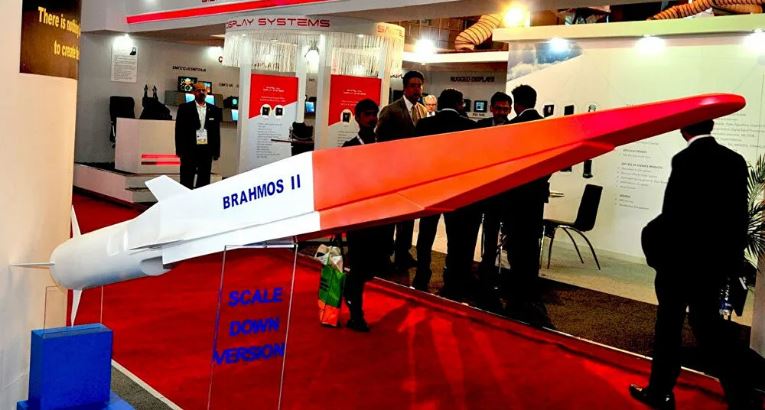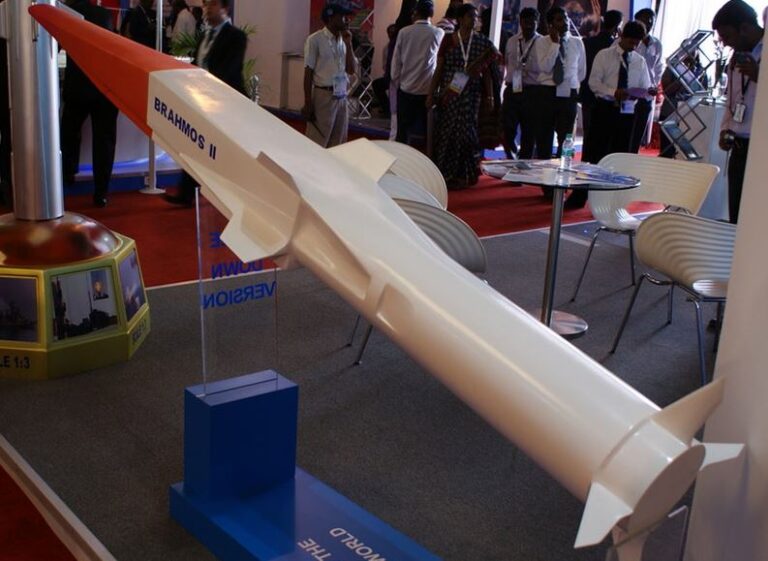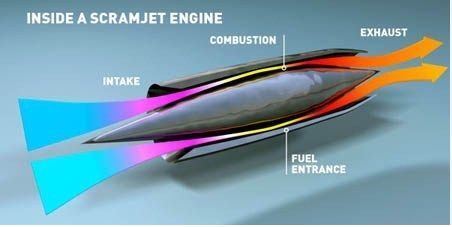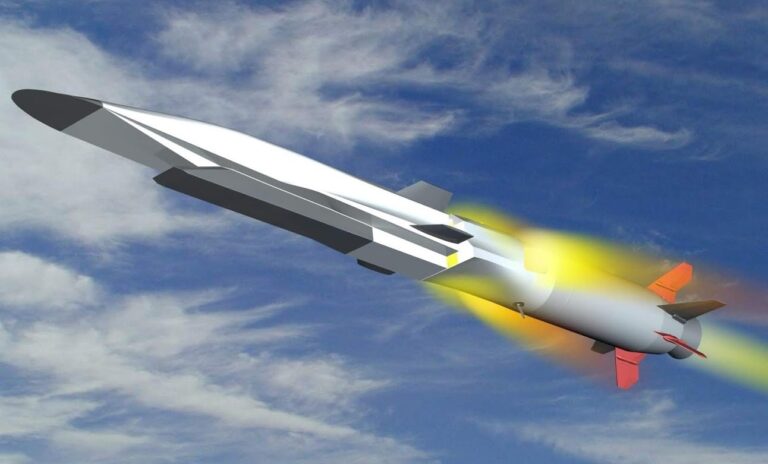After the development and deployment of ballistic missile defense system global military powers started taking interests in countermeasure systems to tackle missile defense system and to ensure strategic deterrence against adversaries. Hypersonic weapons can be categorized into two main types first one is hypersonic glide vehicle (HGV) and second one is Hypersonic cruise missile (HCM).Russia had made some significant advancements in domain of hypersonic technology by developing glide vehicles like Avangard and Hypersonic missiles like Kinzhal.United States and China are also developing hypersonic missiles along with glide vehicles . India is also showing interest in development of hypersonic systems. With the successful development of BrahMos supersonic cruise missile, India is looking forward to develop an advance variant of BrahMos cruise missile which will be BrahMos-2 or BrahMos Mark 2 Hypersonic cruise missile.
BrahMos-2 Hypersonic cruise missile:
The word BrahMos is derived from name of two rivers Brahmaputra located in India and Russian river Moskova.BrahMos-2 will be India first hypersonic cruise missile which is in current development. The project is joint venture of India and Russia. Both countries formed a joint corporation named as BrahMos Aerospace Private Limited.Under the umbrella of this corporation both countries are developing cruise missiles having different ranges and speed.

Hypersonic speed of BrahMos-2:
The BrahMos-II is designed to fly with the speeds of Mach 7 to Mach 8 (approximately 8,600 to 9,800 km/h or 5,300 to 6,100 mph). This makes it exceptionally faster than its previous variant which is the BrahMos, which operates at supersonic speeds of Mach 2.8 to Mach 3.
Design features of BrahMos-2:
As hypersonic missiles travel with hypersonic speed so main challenge during development of these missiles is to find out those materials that are resistant to high temperature caused by friction.BrahMos Aerospace Private Limited already developed special coating of alloys that can withstand high temperatures. The BrahMos Aerospace Private Limited didn’t disclose much information related to design of BrahMos-2 but it is clear that BrahMos mark 2 will use scramjet engine for attaining speed up to Mach up to 6.

Engine and propulsion of BrahMos-2:
BrahMos mark 2 will use Scramjet engine for propulsion system. Scramjet is advanced variant engine of ramjet engine which works on supersonic speed .Scramjet engine has no moving part and engine totally depend on hypersonic speed of aerial vehicles.
Working principal of scramjet engine:
Due to high speed of aircraft air is compressed by front nose section of engine this increases pressure of air, pressurized air is than mixed with fuels which burn and produce high thrust.

Range of BrahMos-2:
Expected range of BrahMos-2 will be above 600 km.According to some Indian officials this range could be enhanced according to need of Indian armed forces.
Warhead and Payload of BrahMos-2:
BrahMos mark 2 is designed to carry both conventional and non-conventional nuclear warhead. The payload capacity of BrahMos-2 will be similar to BrahMos supersonic cruise missile.
Stealth and maneuverability:
The BrahMos mark 2 will be integrated with highly advanced stealth features. The stealth design of the BrahMos-2 will make it able to penetrate and evade many defense systems.
Similarity with Russia’s Tsirkon missile:
According to CEO of BrahMos Aerospace Private Limited Atul Rahane It is possibility that BrahMos-2 Hypersonic cruise missile will share same features with Russian Tsirkon missile in term of electornic systems. The CEO also added that it will take almost five to six years for complete development of BrahMos-2 hypersonic cruise missile. Russia’s Tsirkon can travel upto Mach 9

Variants of BrahMos-2 hypersonic cruise missile:
Indian officials stated that BrahMos mark 2 will have land, air and naval variant according to need and use of Indian defense forces. Indian air force already tested aerial variant of BrahMos supersonic cruise missile on SU-30 MKI.
Strategic deterrence over Pakistan and China:
India has history of armed conflicts with Pakistan especially in Kashmir region. By developing hypersonic cruise missile like BrahMos-2 having speed over Mach 7 reaction time of India will reduce and it will enhance its second strike capability. The BrahMos-2 hypersonic missile will have ability to penetrate Pakistan missile defense system with ease and it will also put immense pressure on adversary command and control system as Pakistan command and control system will need to take rapid decisions in case of Indian attack with highly agile hypersonic missile like BrahMos-2. Pakistan has currently no active missile defense system and country is still lagging in hypersonic technology. This factor will also give advantage to India.
On the other side China showed advancement in hypersonic missile technology China also developed highly sophisticated hypersonic glide vehicle HGV named as DF-ZF. BrahMos-2 will help India to maintain strategic balance with China it will also help India to counter Chinese deterrence in Indian Ocean.
Read out our latest blog related to Russia highly advanced HGV (hypersonic glide vehicle) which is Avangard HGV.
https://battletechinsider.com/hypersonic-missile-technology/avangard-hgv/
Follow our facebook page for latest defense news and updates
https://www.facebook.com/people/Battle-Tech-Insider/100093541134057/?mibextid=ZbWKwL